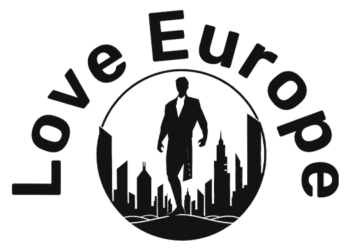Ireland’s 15-year-olds are setting a high standard in health behaviours compared to their peers across Europe, according to the latest data from the Organisation for Economic Co-operation and Development (OECD).
The “Health at a Glance: Europe 2024” report highlights Ireland’s commendable performance in areas such as smoking, alcohol consumption, physical activity, and HPV vaccination.
The report reveals that Ireland boasts the lowest smoking rate among 15-year-olds in the EU at just 7% and one of the lowest rates of cannabis use at 4%.
Perhaps surprisingly, given Ireland’s hard-drinking reputation, only 13% of Irish adolescents report repeated drunkenness, placing Ireland among the best in the EU.
Regarding physical activity, Ireland ranks in the top five EU countries, with a significant proportion of 15-year-olds meeting recommended activity levels. Ireland is also among only eight EU countries to achieve an HPV vaccination rate for boys exceeding 60% in 2023.
However, the report also identifies areas needing improvement.
Nearly half (47%) of Irish 15-year-olds do not consume fruits or vegetables daily, though this is still better than the EU average of 56%, and the prevalence of overweight or obesity among this age group stands at 20%, slightly below the EU average of 21%.
The consumption of sugar-sweetened drinks is also lower in Ireland at 8%, compared to the EU average of 14%. The report credits the Sugar-Sweetened Drinks Tax, introduced in 2018, for reducing sugar intake from carbonated soft drinks from 5kg per person in 2018 to less than 4kg in 2022.
Colm Burke, Minister for Public Health, Wellbeing, and the National Drug Strategy, expressed optimism about the findings. “This report highlights encouraging trends, particularly among younger age groups, which shows the positive impact of our efforts to support a healthier population,” he said.
Reducing smoking rates
Burke emphasised Ireland’s leadership in reducing smoking rates and the ongoing efforts to create a tobacco-free Ireland, including raising the minimum age for tobacco sales to 21.
He also noted progress in reducing alcohol-related harm through measures in the Public Health (Alcohol) Act 2018 and the allocation of funds in Budget 2025 for evidence-based drug prevention programs.
Burke acknowledged the positive outcomes in nutrition and physical activity but cautioned against complacency. He highlighted ongoing initiatives to create a healthier food environment and significant investments in physical activity projects, such as the Active School Flag programme, Parkrun, and upgrades to outdoor facilities.
Looking ahead, the focus for 2025 will be guided by the forthcoming National Physical Activity Framework.
The minister also praised the high HPV vaccination rates, encouraging continued uptake of vaccines to protect public health. “We are privileged in this country to have access to safe and effective vaccines, and I encourage people to take the opportunity to protect themselves by taking the vaccines they are offered,” Burke remarked.
Europe facing urgent health workforce crisis
The OECD report notes that Ireland, and the European health sector at large, is grappling with a severe workforce crisis, with 20 EU countries reporting doctor shortages and 15 countries facing a dearth of nurses in 2022 and 2023.
The shortfall, estimated at approximately 1.2 million doctors, nurses, and midwives, is driven by dual demographic challenges: an ageing population with increasing demand for health services and an ageing health workforce nearing retirement.
Over one-third of doctors and a quarter of nurses in the EU are over 55 and expected to retire soon. Compounding the issue, interest in health careers among young people is waning, with nursing seeing a decline in over half of EU countries between 2018 and 2022.
Foreign workforce recruitment
To mitigate these shortages, European countries have increasingly turned to foreign-trained health professionals. After a temporary dip during the pandemic’s early years, the inflow of foreign-trained doctors rose by 17% in 2022 compared to 2019, while foreign-trained nurses surged by 72%.
In 2023, over 40% of doctors in Norway, Ireland, and Switzerland and over 50% of nurses in Ireland were foreign-trained. However, this reliance on foreign-trained workers risks exacerbating shortages in their home countries, often lower-income nations already struggling with their own health workforce constraints.
Addressing this crisis requires a multi-faceted approach, says the OECD.
In the short term, improving working conditions and remuneration is crucial to making health professions more attractive and retaining current workers. Expanding education and training opportunities for new doctors and nurses is vital to boost supply, though its impact will be felt only in the medium to long term.
With the number of new nursing graduates in the EU growing at a sluggish 0.5% per year between 2012 and 2022, attracting enough young people to meet rising demand remains a significant challenge.
Optimising the skill mix, such as through greater use of advanced practice nurses and leveraging digital technologies and AI, will be essential to enhance productivity and allow health workers to focus more on patient care.
Source link : http://www.bing.com/news/apiclick.aspx?ref=FexRss&aid=&tid=6776e28ca2694ba2a2f535ec1f835b06&url=https%3A%2F%2Fwww.euractiv.com%2Fsection%2Fhealth-consumers%2Fnews%2Fireland-leads-in-adolescent-health-but-oecd-report-finds-health-workforce-in-crisis%2F&c=18385100986824687918&mkt=de-de
Author :
Publish date : 2025-01-01 14:32:00
Copyright for syndicated content belongs to the linked Source.


